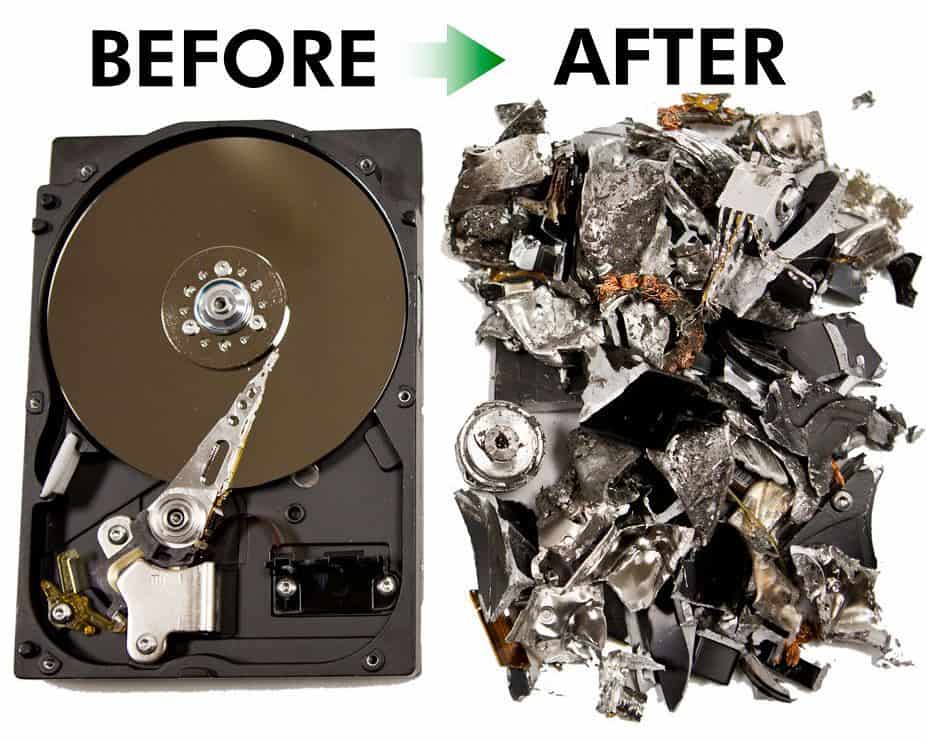Understanding the Function of Data Destruction in Strengthening Cyber Security Defenses
Understanding the Function of Data Destruction in Strengthening Cyber Security Defenses
Blog Article
The Significance of Effective Data Damage Practices in Shielding Sensitive Info and Ensuring Computer Safety
In an era where information violations are increasingly typical, the relevance of reliable information damage methods can not be overemphasized. Carrying out robust data destruction techniques not just mitigates these dangers however also lines up with legal compliance demands, guaranteeing that companies promote their online reputation and foster customer trust.
Understanding Data Destruction
Understanding data destruction is crucial in today's digital landscape, where delicate information can easily be endangered. Reliable data devastation involves not simply guaranteeing but erasing documents that data is irretrievable via detailed approaches. This process is essential for organizations that deal with private client information, intellectual property, or internal files, as any type of violation can lead to severe financial and reputational effects.
Data destruction encompasses numerous methods, including shredding physical media, degaussing magnetic storage space devices, and employing software-based options that overwrite data several times. Each technique offers a details purpose and should straighten with the level of sensitivity of the info being gotten rid of. For instance, physical destruction is commonly preferred for disk drives containing very private information, while software techniques could be enough for much less sensitive information.
Additionally, sticking to market requirements and policies, such as the General Information Security Law (GDPR) or the Wellness Insurance Policy Transportability and Responsibility Act (HIPAA), is necessary for compliance and to mitigate legal threats. Organizations has to create a robust information damage policy, train employees on finest techniques, and routinely audit their procedures to make sure that all delicate details is gotten rid of firmly and properly.
Dangers of Inadequate Practices
Inadequate information damage methods reveal organizations to substantial risks that can have significant consequences. When sensitive details is not properly thrown away, it remains susceptible to unapproved accessibility, which can lead to information violations and identification theft. Such occurrences not just endanger the safety and security of individuals however likewise stain the organization's reputation, leading to a loss of client count on and prospective monetary consequences.
Furthermore, regulative compliance is significantly stringent in lots of sectors. Failing to abide by information destruction regulations can result in substantial penalties and legal activities versus companies. These fines can stress funds and draw away interest from core company procedures.
Additionally, the misuse of recurring information can lead to copyright burglary or business espionage, endangering affordable advantages (data destruction). The effect of insufficient information destruction extends past immediate financial losses; it can additionally lead to long-term damage to brand honesty and market position

Organizations have to recognize that data safety and security is not exclusively about avoiding breaches; it also includes the responsible monitoring of data throughout its lifecycle. Ignoring effective data devastation protocols can have devastating ramifications, highlighting the need for robust measures to reduce these dangers.
Finest Practices for Data Destruction
Carrying out reliable information devastation methods is necessary for safeguarding sensitive information and maintaining compliance with regulative requirements. Organizations ought to embrace a multi-faceted approach to guarantee that information is irretrievable, thus preventing unapproved access and prospective violations.
First, information should be categorized based upon click over here sensitivity, enabling organizations to apply ideal damage techniques customized to the level of threat. For electronic data, using software-based data-wiping tools that abide by industry requirements can properly overwrite existing information. Physical devastation techniques, such as shredding or degaussing, are essential for tools that save delicate details, making sure total removal.
Establishing a clear data retention plan is essential, describing for how long various kinds of details ought to be maintained before damage. Routine audits of information storage systems are additionally required to determine out-of-date or unnecessary data requiring removal.
Additionally, training employees on the value of data damage and the specific methods to follow fosters a society of safety and security within the organization. Finally, maintaining paperwork of information devastation refines provides responsibility and sustains conformity with exterior guidelines and inner plans. By adhering to these finest techniques, companies can dramatically reduce the threats connected with data exposure.
Legal and Conformity Factors To Consider

Failure to adhere to these policies can result in extreme charges, including considerable fines and reputational damages. Organizations needs to apply a durable information devastation plan that lines up with these lawful frameworks and provides clear guidelines on the correct techniques of data disposal, whether physical shredding or electronic wiping.
In addition, preserving documentation of information devastation activities is important for demonstrating compliance during audits or examinations. By prioritizing legal and conformity considerations, organizations can improve their information security pose and foster depend on with stakeholders and customers, inevitably contributing to a more secure data monitoring atmosphere.
Advantages of Effective Information Damage
Efficient information destruction practices expand beyond plain compliance; they offer significant advantages to companies that prioritize them. By ensuring that delicate details is irretrievably damaged, companies minimize the threat of information breaches and the prospective financial consequences linked with them. This aggressive approach not just safeguards against unapproved gain access to yet likewise improves the general reliability of the organization in the eyes of clients and stakeholders.
Implementing robust information damage techniques, such as physical devastation of storage gadgets or advanced data cleaning strategies, adds to the strengthening of a company's cybersecurity pose. data destruction. It minimizes the possibility of copyright theft and protects exclusive info, thus preserving a competitive edge on the market

Conclusion
In conclusion, efficient data damage methods are important for safeguarding delicate info and boosting general computer safety. Ultimately, a commitment to robust data damage strategies promotes a society of duty, thus strengthening a company's cybersecurity position and keeping customer trust.

Report this page